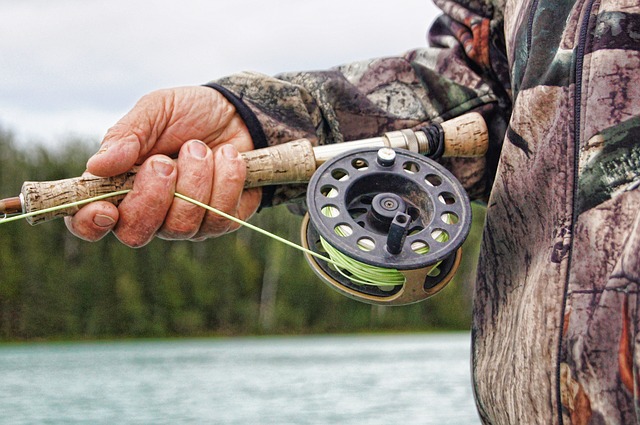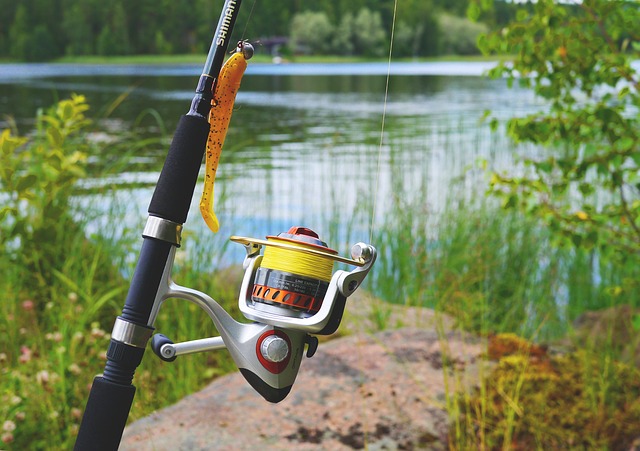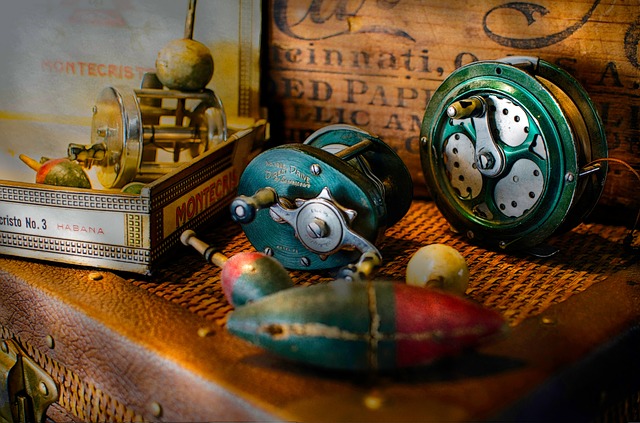Fishing is a fantastic sport. It’s not only about the fish; it’s also a terrific opportunity to cool off, and spend time with family and friends.
It could be a little challenging for you if you don’t have the necessary tools and don’t understand how to utilize them. This is due to the fact that fishing is impossible without certain fishing equipment.
Whether you are experienced or not, you’ll need to put a line on a reel at some point.
Whether you are experienced or not, you’ll need to put a line on a reel at some point. Yes! You can’t keep using an old line for much longer until it breaks. The goal of this post is to walk you through the procedures to put a line on a reel.
Let’s dive in!

Fishing Reels and Its Different Types
A fishing reel is a device that attaches to a narrow straight bar known as a fishing rod. It is used to regulate the fishing line.
Spincast, Baitrunner, and Spinning reels are the types of fishing reels.
Spincast Reel
This reel is a simple-to-use fishing reel. It is also made specifically for youngsters.
Closed face reel is another name for the Spincast reel. It has a closed face that hides all of its important components.
The Spincast reel is a better fishing reel, however its design ignores distance and precision. If you want to be a great angler, we recommend that you look at the next two fishing reels.
Baitrunner
This reel type is difficult to use and control. The baitrunner was created with experienced anglers in mind. If you want to achieve accuracy, this is a better fishing reel to use.
Although it is a difficult reel to master, it is not impossible to learn. After a few tries, you should be able to figure out how to utilize it.
Spinning Reel
Anglers prefer to utilize this reel the most. It features an open face design. The design considers accuracy as well as usability. It’s simple to use and allows for line changes when necessary.
Read also:
How to Put Fishing Line on a Reel
Fishing lines can be classified into several varieties. They are as follows:
- Fluorocarbon: This is a good fishing line for still water. It is rigid and can be utilized with a live bait.
- Monofilament: This type of fishing line is ideal for topwater lures. It’s more flexible than fluorocarbon lines and can be used with live bait as well.
- Braided: they’re good for heavy water vegetation. They’re simple to spot, stronger than the previous two fishing lines, but slower.

Step-by Step Instructions on Putting a Fishing Line on a Reel
SPINCAST REEL
Step 1: Open the reel’s front cone and all the old lines should be removed.
Step 2: Take the line and feed it through the rod’s first guide.
Step 3: Tie the knot after running the line through the front cone.
Step 4: Wrap the rope around the reel and tie a beautiful overhand knot.
Step 5: Tighten the knot by tying another overhand knot around the spool.
Step 6: Pull your main line tight with the first knot under to verify it is secure.
Step 7: Replace the front cone while maintaining the line’s tightness. Screw the front cone back on after tightening the line.
Step 8: Start winding the reel after applying some pressure on it.
Step 9: Remove the front cone and inspect the inside of the reel to confirm that 1/8 of an inch of the reel is visible.
Step 10: Tie on your favorite lure after running the line through the rest of the guides.
SPINNING REEL
Step 1: Wind the reel a few times to figure out which way it’s spinning.
Step 2: To open the bail, raise the tiny handle and remove the previous lines.
Step 3: Pull the new line through the line guides and tie a knot to ensure it is adequately protected.
Step 4: To close the bail, turn the small handle down. Make sure there is enough line length after the knot.
Step 5: Before drawing the rope, it should be held about 0.3 m above the ground. Ascertain that the line passes through yours. Look for twists and make any adjustments to ensure that they are properly aligned.
Step 6: The spool should not exceed 0.3 cm from the rim or else it will easily get tangled.
Step 7: Tie a lure to keep it protected and well-placed.
BAITRUNNER REEL
Spooling a baitrunner reel is similar to that of a spinning reel. Follow the steps above, and you are good to go.
How much line do you need on a reel?
Each type of fishing reel comes with an instruction on the number of yards it can take. Many reel producers recommend 200 yards as the acceptable line length a reel can handle

Tips to Avoid Line Twists and Reel Spooling Problem
- Ensure that you close the bail manually after each cast to avoid any complications.
- If you feel the line may break due to a drag, loosen it up or back reel.
- Use a line conditioner every time you use it.
- Use a line conditioner on the line guides too in sub-freezing temperatures.
- Change your fishing line when you feel it is due.
Final Thoughts
If you don’t know your way around a fishing reel, restringing a new line can be tricky. It will be easier for you if you follow this step-by-step guide. You will finally get it after a few practice sessions. Try out your favorite line and reel combination.
Happy fishing!


0 Comments